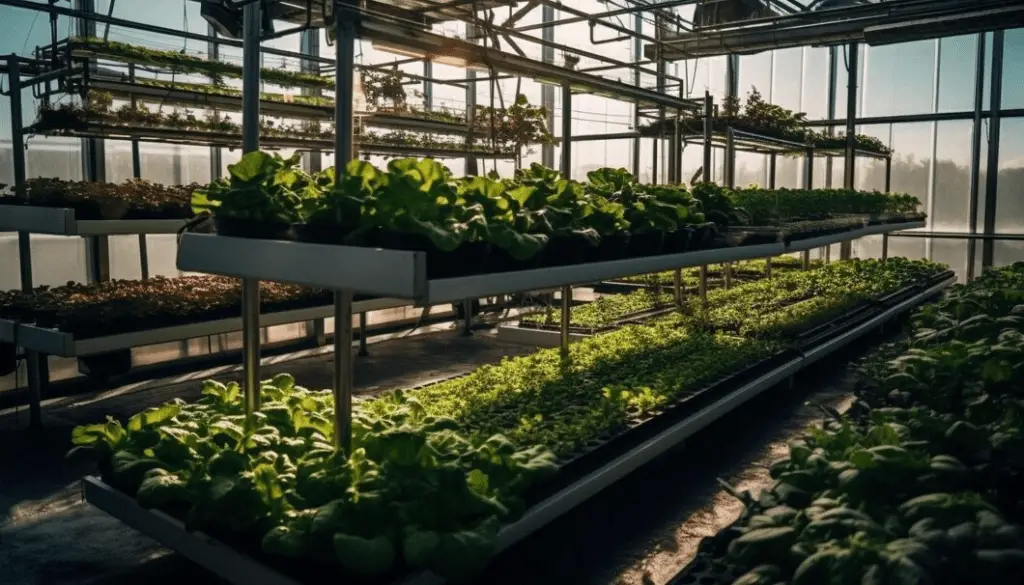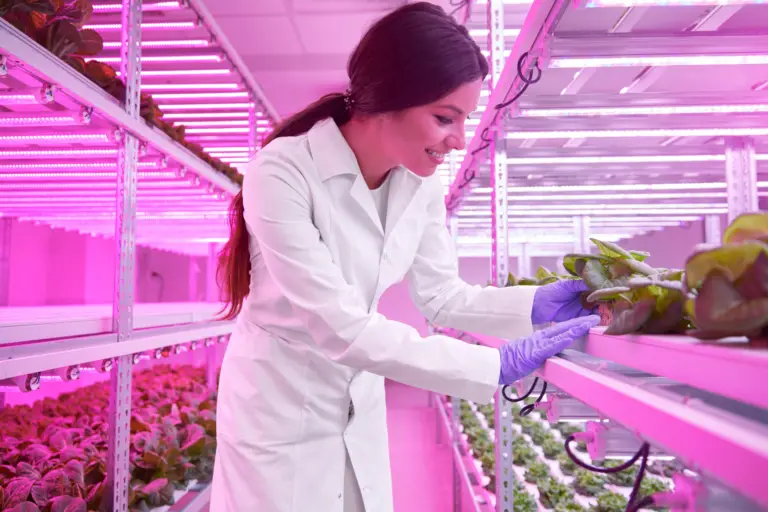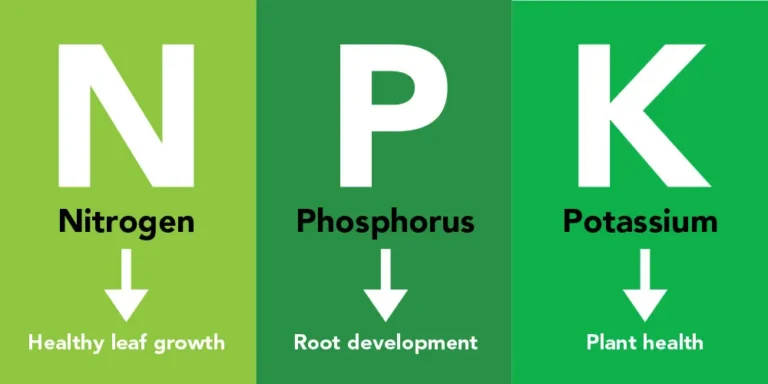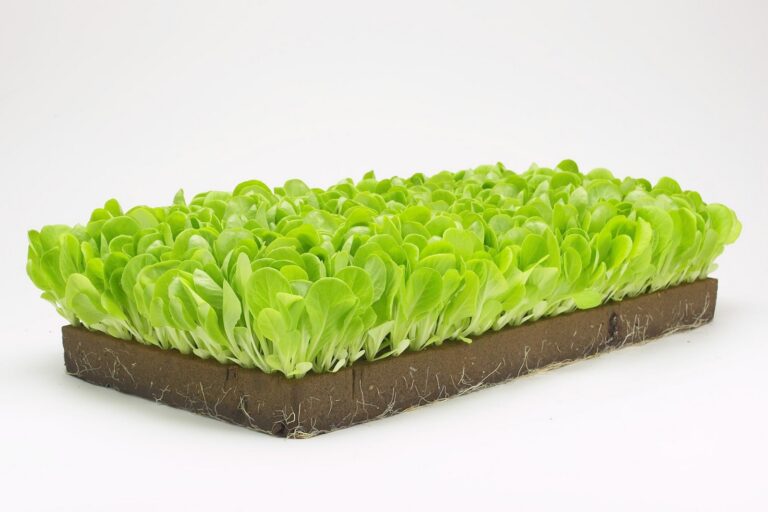How Aeroponics Can Revolutionize Your Indoor Gardening: An Overview and Benefits
Table of Contents
The Concept of Aeroponics in Indoor Gardening: Understanding the Basics
Aeroponics is a revolutionary approach to indoor gardening that is gaining popularity among gardening enthusiasts, thanks to its remarkable efficiency and effectiveness. Unlike traditional gardening methods that rely on soil as a medium for plant growth, aeroponics involves suspending plants in a misted environment where the roots are exposed to air and sprayed with a nutrient-rich solution. This unique technique allows plants to receive oxygen, water, and nutrients directly, resulting in accelerated growth and enhanced nutrient absorption.

One of the key advantages of aeroponics is its ability to maximize space utilization. By eliminating the need for soil and relying on a misted environment, aeroponics enables gardeners to grow a significant number of plants in a limited space. This makes it particularly suitable for small indoor gardens, where space is often a constraint. Additionally, the controlled environment of an aeroponic system eliminates the need for conventional gardening equipment such as trowels and hoses, further reducing the space required for gardening activities.
The Advantages of Aeroponics over Traditional Gardening Methods
Aeroponics, as a modern gardening method, offers several advantages over traditional forms of gardening. One key advantage is its ability to maximize the utilization of space. Unlike traditional gardening that requires ample soil and growing medium, aeroponics uses a misting system that delivers nutrients directly to the plant’s roots suspended in air. This allows for greater plant density and more efficient use of space, making it an ideal choice for indoor gardens or areas with limited room for traditional soil-based gardening.

In addition to space efficiency, aeroponics also promotes faster and more vigorous plant growth. By delivering nutrients directly to the roots in the form of a fine mist, plants can absorb the necessary nutrients more effectively than in traditional soil-based methods. This nutrient-rich environment stimulates rapid growth, resulting in quicker harvests and increased crop yields. Furthermore, since the roots are exposed to oxygen, they receive an ample supply of this vital element, further enhancing plant health and growth. The combination of nutrient-rich mist and increased oxygen availability creates an optimal environment for plants to thrive in an aeroponic system.
Exploring the Potential of Aeroponics for Small Spaces
Aeroponics is revolutionizing the way we think about gardening, especially for those with limited spaces. The potential of aeroponics for small spaces is immense, as it allows plants to be grown without the need for soil and with minimal water usage. This makes it an ideal solution for urban dwellers or individuals with limited yard space.
One of the key advantages of aeroponics for small spaces is its ability to maximize vertical space. With traditional gardening methods, plants require a significant amount of horizontal space, leading to limited growing areas. However, with aeroponics, plants can be grown vertically, utilizing the full potential of the available area. This means that even small balconies or indoor spaces can be transformed into lush gardens, providing a green oasis in urban environments.
Furthermore, aeroponic systems allow for precise control over the growing conditions, ensuring optimal growth for plants. Nutrient-rich solutions are sprayed directly onto the roots, maximizing nutrient absorption and promoting healthy plant development. This results in faster growth rates and higher crop yields compared to traditional gardening methods. Additionally, the controlled environment of aeroponic systems creates a pest-free environment, minimizing the need for pesticides and reducing the risk of plant diseases.
In the next section, we will delve deeper into the techniques and strategies for enhancing plant growth and nutrient absorption with aeroponics. We will explore the role of oxygenation in aeroponics and its impact on plant health, as well as discuss the importance of maintaining pH balance and nutrient levels in aeroponic systems. Stay tuned for expert tips on optimizing your aeroponic garden for small spaces!
Enhancing Plant Growth and Nutrient Absorption with Aeroponics
Aeroponics, a technique that allows plants to grow in an air or mist environment without the use of soil, has been gaining popularity in the world of indoor gardening. One of the key benefits of aeroponics is its ability to enhance plant growth and nutrient absorption, leading to healthier and more productive crops.
In traditional gardening methods, plants rely on soil for nutrients, which can often be limited and slow to reach the plant’s roots. With aeroponics, however, the plants are directly exposed to a nutrient-rich mist, allowing for faster and more efficient absorption. This increased nutrient uptake enables the plants to grow at an accelerated rate, resulting in higher yields and shorter growth cycles.
Research has shown that aeroponic systems can significantly improve the overall nutrient availability to plants compared to conventional soil-based methods. In a study conducted by Xie et al. (2018), it was found that lettuce plants grown in an aeroponic system had higher nutrient content, including essential vitamins and minerals, compared to those grown in soil. This demonstrates the potential of aeroponics to enhance the nutritional value of crops, making them not only more abundant but also more nutrient-dense.
Here’s a table on enhancing plant growth and nutrient absorption with aeroponics:
| Aspect | Description |
|---|---|
| Aeroponics System | High-pressure misting system that delivers nutrients directly to plant roots in the air. |
| Increased Oxygen Levels | Plant roots receive ample oxygen, promoting better respiration and nutrient uptake. |
| Optimal Nutrient Absorption | Nutrients are delivered in a highly soluble form, enhancing absorption by plant roots. |
| Rapid Growth Rate | Plants exhibit accelerated growth due to efficient nutrient absorption and oxygen supply. |
| Water Efficiency | Aeroponics uses less water compared to traditional methods, minimizing water wastage. |
| Minimized Disease Risk | Reduced soil contact lowers the risk of soil-borne diseases, promoting healthier plants. |
| Space-Efficient Design | Well-suited for vertical farming or limited space scenarios, maximizing cultivation area. |
| Customizable Nutrient Mix | Allows precise control over nutrient composition, tailoring it to specific plant needs. |
| Year-Round Cultivation | Indoor aeroponic systems enable consistent plant growth regardless of external seasons. |
Moreover, the precise control over the nutrient solution in aeroponics allows for customization based on the specific needs of different plant species. This targeted approach ensures that plants receive the optimal balance of nutrients for their growth and development, leading to healthier and more vigorous plants. Additionally, the absence of soil in aeroponic systems eliminates the risk of nutrient imbalances caused by soil contamination or depletion, providing plants with a consistently ideal nutrient environment.
In conclusion, aeroponics offers a unique opportunity to enhance plant growth and nutrient absorption in indoor gardens. By providing plants with a direct and customizable nutrient solution, this method promotes faster and more efficient nutrient uptake, resulting in healthier and more productive crops. With its ability to optimize nutrient availability and eliminate soil-related challenges, aeroponics stands as a promising solution for gardening enthusiasts looking to maximize their yields and cultivate nutrient-dense produce.
How Aeroponics Creates a Pest-Free Environment for Indoor Gardens
Aeroponics, a revolutionary method of indoor gardening, offers a remarkable solution to the pest woes that often plague traditional gardening methods. By utilizing a unique misting system, aeroponics creates a pest-free environment for indoor gardens. Unlike soil-based gardening, where pests can easily infest the plants through the soil or surrounding vegetation, aeroponic systems suspend the plant roots in air and mist them with a nutrient-rich solution. This innovative approach eliminates the entry points for pests, effectively reducing the risk of infestation and promoting healthier plant growth.

Additionally, the absence of soil in aeroponic gardens minimizes the habitat for common pests like ants, slugs, and snails. Without a conducive environment for these pests to thrive, the chances of encountering infestations are significantly reduced. Furthermore, the closed and controlled environment of indoor gardens allows for better monitoring and early detection of any potential pest issues. Integrated into aeroponic systems, advanced sensors and automated controls enable timely interventions, ensuring that any emerging pest problems are swiftly addressed to maintain a pest-free environment.
In conclusion, aeroponics offers a pest-free haven for indoor gardens, thanks to its unique misting system and soilless setup. By suspending plants in air and providing a nutrient-rich mist, aeroponic systems eliminate the entry points for pests and significantly reduce the risk of infestation. With the added benefits of better monitoring and intervention capabilities, aeroponics proves to be an effective solution for gardening enthusiasts seeking a pest-free environment for their indoor gardens.
Maximizing Crop Yield and Efficiency with Aeroponic Systems
Aeroponic systems have proven to be highly effective in maximizing crop yield and efficiency in indoor gardens. By harnessing the power of misting, these systems provide plants with a continuous supply of oxygen and nutrients, leading to faster growth and higher productivity.
One of the key advantages of aeroponics is its ability to deliver nutrients directly to the plant roots in the form of a fine mist. This targeted delivery system ensures that every plant receives an equal amount of nutrients, eliminating any competition for resources. As a result, plants are able to absorb essential nutrients more efficiently, leading to healthier and more robust growth.
Furthermore, the misting nature of aeroponic systems allows for greater oxygenation of the root zone. Oxygen is vital for root development and nutrient absorption, and the continuous misting process ensures that roots are exposed to ample oxygen supply. This increased oxygenation not only enhances plant health but also facilitates the breakdown of nutrients, making them more readily available for uptake by the plants.
In addition to nutrient delivery and oxygenation, aeroponic systems also offer precise control over environmental factors such as lighting and temperature. This level of control allows growers to create optimized conditions for plant growth, further maximizing crop yield and efficiency. By providing plants with the ideal combination of nutrients, oxygen, and environmental conditions, aeroponic systems offer a highly effective approach to indoor gardening.
The Role of Oxygenation in Aeroponics and its Impact on Plant Health
Oxygenation plays a crucial role in the success of an aeroponic system and the overall health of plants. In aeroponics, roots are suspended in air and misted with a nutrient-rich solution. The presence of oxygen in this environment is vital for several reasons.
Firstly, oxygen helps facilitate the absorption of nutrients by the roots. When oxygen levels are optimum, roots are able to absorb nutrients more efficiently, leading to accelerated plant growth and development. Research has shown that well-oxygenated roots have higher nutrient uptake rates compared to those in oxygen-deprived environments.
Secondly, oxygenation prevents the growth of harmful pathogens and diseases. Pathogens such as anaerobic bacteria, which thrive in low-oxygen conditions, can pose a serious threat to plant health. By ensuring adequate oxygen supply, aeroponic systems create an inhospitable environment for these pathogens, reducing the risk of plant infections and diseases.

Maintaining the right oxygen levels in an aeroponic system can be achieved through various methods. One common approach is the use of air pumps or airstones, which introduce oxygen into the nutrient solution. Additionally, regular monitoring of oxygen levels and adjusting aeroponic system parameters accordingly is essential for achieving optimal plant health and maximizing crop yield.
Managing Water Usage and Conservation in Aeroponic Gardens
Water usage is a crucial consideration in aeroponic gardens, as it directly affects the health and productivity of plants. Unlike traditional gardening methods, where water is delivered to plants through soil, aeroponics utilizes a misting system to provide water and nutrients directly to the plant roots suspended in air. This targeted approach allows for precise control over water usage, making aeroponic gardens highly efficient and water-conserving.
One of the key advantages of aeroponic systems is their ability to minimize water waste. The misting system delivers water in a highly targeted manner, ensuring that only the plant roots receive moisture, while the surrounding environment remains dry. This not only reduces water loss due to evaporation but also prevents excess water from saturating the growing medium or seeping into the ground. By precisely delivering water to the roots, aeroponics allows plants to absorb the optimal amount of moisture they need, promoting healthy growth without wastage. Additionally, the recirculation feature in many aeroponic systems further enhances water conservation by collecting and reusing any excess water or nutrient solution, minimizing overall water consumption.
Maintaining pH Balance and Nutrient Levels in Aeroponic Systems
Maintaining the proper pH balance and nutrient levels in aeroponic systems is crucial for achieving optimal plant growth and maximizing crop yield. In aeroponic gardening, where plants are suspended in air and receive nutrients through a fine mist, it is essential to closely monitor and adjust these factors to ensure the health and productivity of your plants.
Maintaining the pH balance involves keeping the acidity or alkalinity of the nutrient solution at an ideal level for plant uptake. Different plants have different pH preferences, and it is important to adjust the nutrient solution accordingly. By regularly testing the pH levels using a reliable pH meter or testing kit, you can make necessary adjustments to keep the pH within the desired range. This allows the plants to efficiently absorb the essential nutrients they need for growth and development. Additionally, monitoring and maintaining nutrient levels in aeroponic systems is vital to provide plants with a well-balanced diet. A deficiency or excess of any particular nutrient can lead to stunted growth, nutrient deficiencies, or even plant death. Regularly checking the nutrient levels and adjusting the solution accordingly ensures that plants receive the right amounts of essential macronutrients (such as nitrogen, phosphorus, and potassium) and micronutrients (such as iron, zinc, and manganese) for their optimal health and productivity.
In order to maintain the pH balance and nutrient levels in aeroponic systems, it is recommended to follow a nutrient schedule or feeding program. This program outlines the ideal levels of nutrients to be added to the system at different stages of plant growth. It takes into account the specific needs of various plant varieties and helps prevent nutrient deficiencies or imbalances. Additionally, using high-quality and properly formulated hydroponic or aeroponic nutrients can greatly contribute to maintaining pH balance and nutrient levels. These products are designed to provide essential elements in easily absorbable forms, ensuring plants receive the necessary nutrients efficiently. Regular monitoring, adjustment, and adherence to a nutrient schedule are key to maintaining ideal pH and nutrient levels, promoting healthy plant growth, and maximizing productivity in aeroponic systems.
The Importance of Lighting and Temperature Control in Aeroponic Gardens
The success of an aeroponic garden heavily relies on proper lighting and temperature control. These two factors are crucial for the growth and development of plants, as they directly impact various physiological processes and overall plant health. In aeroponic systems, where plants are suspended in air and receive nutrients through a fine mist, providing appropriate light and maintaining optimal temperatures are paramount for achieving optimal results.
Still confused? Watch this video!
Firstly, let’s discuss the importance of lighting in aeroponic gardens. Light is the primary source of energy for plants through a process called photosynthesis. Adequate light levels are essential for the production of sugars, which are used for plant growth and development. In indoor settings, artificial lighting, such as fluorescent, LED, or high-intensity discharge (HID) lamps, can be used to provide the necessary light spectrum and intensity required for optimal plant growth. It is crucial to understand the specific light requirements of different plant species to ensure they receive the right amount and quality of light. Sophisticated lighting systems allow gardeners to adjust the duration and intensity of light to mimic natural sunlight, promoting healthy photosynthesis and overall plant vitality.
In addition to lighting, temperature control is vital in aeroponic gardens to create a favorable environment for plant growth. Different plant species have specific temperature requirements for optimal growth and development. For most plants, a temperature range of 70°F to 80°F (21°C to 27°C) during the day and 60°F to 70°F (15°C to 21°C) at night is considered ideal. Consistently high temperatures can lead to heat stress and hinder plant growth, while low temperatures can slow down physiological processes and reduce nutrient absorption. Integrated systems that combine heating, ventilation, and air conditioning (HVAC) technologies can help maintain the desired temperature range in indoor gardening setups. Proper insulation and ventilation are crucial for adequate air circulation, which helps regulate temperature and control humidity levels.
Key Considerations for Setting Up an Aeroponic System in Your Indoor Garden
When setting up an aeroponic system in your indoor garden, there are several key considerations that you should keep in mind. One of the most crucial factors to consider is the type of plants you wish to grow. Different plants have different nutrient and moisture requirements, so you need to ensure that your aeroponic system can provide the optimal conditions for their growth. Additionally, consider the space available in your indoor garden. Aeroponic systems can be compact and space-efficient, making them suitable for small areas. However, you still need to ensure that there is enough room for the system to be set up and for the plants to grow comfortably. By taking into account the specific needs of your desired plants and the available space, you can create an ideal environment for successful aeroponic gardening.
Watch this video to learn more!
Another important consideration is the availability of resources such as water and electricity. Aeroponic systems rely on a continuous supply of water and nutrient solution to nourish the plants’ roots. Therefore, it is essential to have a reliable water source and a system for effectively distributing the nutrient solution. Additionally, aeroponic systems often require electricity to power pumps, timers, and other equipment. Make sure that your indoor garden has access to a stable and sufficient power supply to run the aeroponic system efficiently. By addressing these resource-related considerations, you can ensure that your aeroponic system operates smoothly and provides the necessary support for your plants’ growth.
Common Challenges and Troubleshooting Tips for Aeroponic Gardening
As with any form of gardening, aeroponic gardening certainly presents its fair share of challenges. However, armed with the right knowledge and troubleshooting techniques, these challenges can be overcome to ensure successful results. One common challenge in aeroponic gardening is maintaining the optimal nutrient solution. Due to the high concentration of nutrients required in aeroponic systems, it is crucial to regularly monitor and adjust the nutrient levels to avoid deficiencies or toxicities. To overcome this challenge, gardeners can employ the use of nutrient monitoring tools and test kits, allowing them to accurately measure the nutrient solution’s pH, electrical conductivity (EC), and nutrient levels. Regular monitoring and adjustments based on the specific requirements of the plant species being grown will help maintain the ideal nutrient balance for healthy growth.
Another challenge that aeroponic gardeners may encounter is the occurrence of clogged nozzles. As aeroponic systems utilize fine mist spray to deliver nutrients and moisture to the plant roots, any debris or mineral buildup can lead to nozzle blockages, disrupting the spray pattern and potentially hindering plant growth. To address this challenge, regular maintenance and cleaning of the nozzles are essential. Gardeners should inspect the nozzles for any signs of clogging, such as reduced or uneven spray patterns, and clean them with an appropriate nozzle cleaner, ensuring smooth and consistent nutrient delivery. Additionally, incorporating a filtration system into the aeroponic setup can help reduce the likelihood of nozzle clogs by filtering out sediment and particles from the nutrient solution before reaching the nozzles. By taking these proactive measures, gardeners can ensure the efficient operation of their aeroponic system and maintain optimal plant health.
Real-life Examples and Success Stories of Indoor Gardens using Aeroponics
Real-life examples and success stories serve as powerful inspiration for indoor gardening enthusiasts looking to incorporate aeroponics into their own setups. Let us explore a few remarkable instances of individuals who have harnessed the potential of this innovative gardening method.
In one case study, a small-scale urban farmer in a bustling city was able to turn their limited space into a flourishing indoor garden using aeroponics. By utilizing vertical growing systems, the gardener maximized their crop yield while minimizing the use of valuable space. With carefully calibrated nutrient delivery and precise control over environmental factors, the farmer achieved impressive results, growing a wide variety of leafy greens, herbs, and even small fruiting plants. The success story of this urban farmer demonstrates the immense potential aeroponics holds for utilizing minimal space to create abundant, fresh produce.
On a larger scale, a commercial hydroponic farm found resounding success upon transitioning to aeroponics. By implementing aeroponic systems, the farm experienced a significant reduction in water usage when compared to traditional agricultural methods. This not only contributed to sustainable resource management but also allowed them to enhance crop production and optimize nutrient absorption for their plants. With this newfound efficiency, the farm was able to cultivate a larger variety of crops throughout the year, catering to the demands of a growing market. This illuminating example illustrates how aeroponics can revolutionize commercial farming practices and pave the way towards a more environmentally conscious and productive future.
These real-life examples of indoor gardens using aeroponics demonstrate the immense potential and benefits this innovative gardening method holds. From urban farmers harnessing limited spaces to commercial ventures prioritizing sustainability, aeroponics has proven to be a game-changer in the realm of indoor gardening. By incorporating aeroponic technology, individuals and businesses alike can grow an abundant array of crops efficiently and sustainably, contributing to a healthier and more food-secure future.
• A small-scale urban farmer utilized aeroponics and vertical growing systems to turn limited space into a flourishing indoor garden.
• By carefully calibrating nutrient delivery and controlling environmental factors, the farmer achieved impressive results in growing various crops.
• This success story demonstrates the potential of aeroponics to maximize crop yield while minimizing space usage.
• A commercial hydroponic farm experienced significant success after transitioning to aeroponics.
• The implementation of aeroponic systems led to a reduction in water usage and enhanced crop production for the farm.
• This example highlights how aeroponics can revolutionize commercial farming practices by optimizing resource management and meeting market demands.
• Real-life examples of indoor gardens using aeroponics showcase its potential benefits for individuals and businesses alike.
• Aeroponic technology allows for efficient and sustainable cultivation of diverse crops, contributing to a healthier food-secure future.
What types of plants can be grown using aeroponics in indoor gardens?
Aeroponics allows for the growth of a wide variety of plants, including leafy greens, herbs, fruits, and vegetables. Some examples include lettuce, basil, tomatoes, strawberries, and peppers.
How does aeroponics prevent pests from infesting indoor gardens?
Aeroponics creates a pest-free environment by eliminating the need for soil, which is a common breeding ground for pests. Additionally, the nutrient mist used in aeroponic systems does not attract pests like traditional soil-based gardening methods.
Can aeroponics be used in small spaces like apartments or urban environments?
Yes, aeroponics is highly suitable for small spaces. Its vertical and compact design allows for efficient use of space, making it ideal for apartments, urban environments, and even small balconies or rooftops.
How does aeroponics contribute to water conservation?
Aeroponic systems utilize a closed-loop system that recirculates water, minimizing water usage compared to traditional gardening methods. This efficient water management helps conserve water resources and reduces overall water waste.
What are the key considerations for setting up an aeroponic system in an indoor garden?
When setting up an aeroponic system, it is important to consider factors such as proper lighting, temperature control, pH balance, nutrient levels, and oxygenation. Additionally, selecting the right types of plants and ensuring proper spacing and ventilation are crucial for optimal growth.
Are there any common challenges associated with aeroponic gardening?
While aeroponic gardening offers numerous benefits, there are some challenges to be aware of. These may include maintaining the correct pH and nutrient levels, preventing clogging in the misting nozzles, and ensuring proper airflow and ventilation within the indoor garden.
Can you provide some real-life examples of successful indoor gardens using aeroponics?
Sure! One example is the AeroFarms indoor vertical farm in New Jersey, which utilizes aeroponics to grow a variety of leafy greens and herbs. Another example is the Babylon Micro-Farm in California, where aeroponics is used to cultivate vegetables and fruits in a controlled environment. These success stories demonstrate the effectiveness and potential of aeroponics in indoor gardening.

Pallavi Gupta is a burgeoning writer at SouthElMonteHydroponics, blending her passion for data analysis with a keen interest in biotechnology. Currently pursuing a Bachelor’s in Biotechnology at Amity University, Pallavi delves into the intricacies of life sciences while gaining hands-on experience in the exciting world of data analysis. Her unique background provides a fresh perspective on hydroponic farming, as she explores the intersection of biotechnology and sustainable agriculture. Through her writing, Pallavi aims to bridge the gap between data-driven insights and innovative farming practices, inspiring others to harness technology for a greener future.






